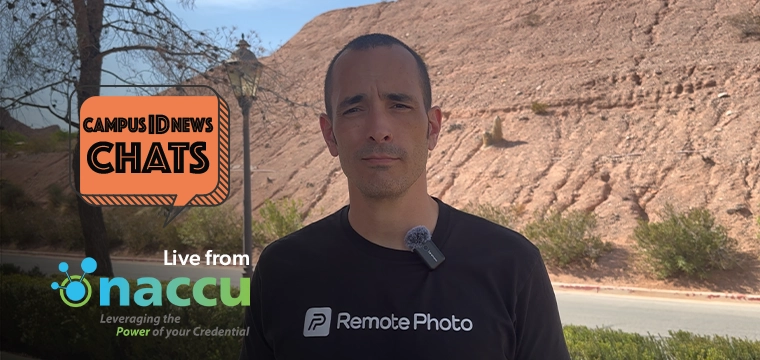A two-phased approach to marketing your campus card program
So you have finally installed your new ID card system. The contract has been signed, the technical infrastructure has been laid, the equipment has been delivered, and the personnel have been hired. What took months and possibly years to complete has come to fruition. It’s time to sit down in your favorite chair and relax. Right?
Wrong. The truth is that although your new card program is in place, there is much left to do. You may have picked the perfect card system, from the perfect vendor, for the perfect price, but if no one knows about the programs’ inherent benefits your hard work may be for naught. In other words, a lack of awareness will result in a lack of participation. A lack of participation equals a stale card program, and a stale card program usually produces disappointing results. To avoid this pitfall there are many things a savvy administrator can do, all of which center around a common concept known as card program marketing. Or in more specific terms, the process and practices of informing a target audience about a new product or service being offered to them.
Card program marketing can take many forms but typically involves two major areas: Initial Program Marketing (IPM) and Program Awareness Marketing (PAM). Initial program marketing focuses on the beginning of your card program’s lifecycle. Program awareness marketing is performed throughout a program’s lifecycle and is used to remind your cardholders of the services and uses associated with their ID card. In short, IPM kick starts your card program and PAM keeps it going throughout the years.
Before we look at the specifics involved with these two types of marketing phases let us first ask two very important questions about your card program. These may sound like simple questions at first but the answers can have an overwhelming effect on the future of your program.
First, you have to ask: Will the card be mandatory for all cardholders? Institutions that make it mandatory for people to carry their cards have a higher participation rate. It stands to reason. If you were a cardholder and no one was forcing you to obtain this card, why would you expend the effort to get one? If for some reason you are not allowed to make it mandatory then your next course of action should be to make it impossible for someone to go to your institution and not get a card. Much like a credit card in today’s world, you might not have to get one, but it sure does make life easier when you do have one.
The second key question: Are you going to charge people for their new card? The minute you make the decision to charge your cardholders for their new card you are creating a negative view towards your program and a barrier to mass-issuance. When a person is forced to pay for something they don’t don’t think that they need there is resentment and resistance. This resentment can lead to bad publicity and a questionable future. Ok, great, charging for cards is bad, but what if you are not able to avoid this problem due to political or financial reasons. This is where you need to be creative in your approach. Embed the charge in another fee the cardholder is paying to the institution. Double the cost of a replacement card for people that lose their cards (most institutions have seen that the amount of the fee has very little impact on lost/stolen replacement rates. Whatever you do, avoid directly associating fees with your card.
Now let’s look at the IPM side of marketing your program. Chances are that if you just launched a new card program you are going to need to host some kind of event that will let you issue lots of cards in as short a time as possible. This can equate to several days or several weeks of constant carding. In order to make this event a success you will need ample amounts of printed materials to be posted, mailed and handed out weeks before, during, and after the actual event. These printed materials can consist of mailers, flyers, posters, brochures, etc. Opportunities to speak directly to your cardholders (orientations, seminars, etc.) about the program should always be taken as they can serve as a valuable resource in increasing attendance at the carding event.
The information you are speaking about and listing on your materials should consist of specific information about the carding event (dates, times, places) and explain what the new card is about and what services it will provide at your institution. In addition to these printed materials you should also consider including promotional items in the event to help bolster and spread information about the new program.
Also important during the IPM phase is the description of the services associated with the new program. In particular, you should highlight and explain in detail the main applications associated with the card. If for example your main reason for purchasing the new card program was to obtain a meal plan system then you should expend every effort to explain its benefits. Or, if the card program will be supporting a merchant community you should begin to publicize which merchants are involved and how convenient it is that they accept the new card. Remember, the more information you give a person about their card the more comfortable they will be with using it in the future.
Once the initial marketing has been accomplished and your program is off to a healthy start, you should begin to plan for the PAM phase. This is the marketing phase that will continue for the life of your card program and will ensure that cardholders are reminded of the services associated with their card in addition to any new services that might be added.
This phase is very important for the growth of your program and failure to include it in your future plans can be just as detrimental to your card system as never marketing it at all.
Typical PAM procedures include regularly scheduled releases of information to your cardholders. These releases of information can be given out with the card, mailed ahead of time or simply placed in easily accessible areas for people to take. Brochures can work well for this phase. However, if cost is a factor, flyers can be designed to handle this same purpose. Another nice addition to the PAM phase is often an instructional or informational video about the card program that can be given away with the card. A video allows you to explain your card program in an interactive and visual appealing way, meaning that your cardholders will be more likely to watch and learn.




